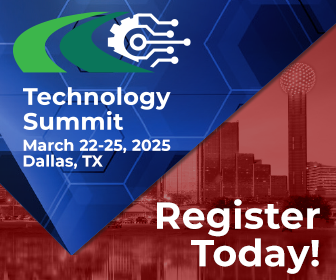- Home
- U.S. Presidential Candidates One-Up Each Other On Infrastructure Investment
Stories
U.S. Presidential Candidates One-Up Each Other on Infrastructure Investment


With poor maintenance pulling the equivalent of a 75¢-per-gallon gas tax out of American drivers’ pockets, and interest rates at near-record low, it’s exactly the right time for leaders of both major political parties in the United States to be making the case for new infrastructure investment.
And as the U.S. moved past Labor Day and into the home stretch on this year’s federal election campaign, that’s exactly what was happening. It placed transportation advocates in a welcome and unfamiliar place: watching the two major party nominees try to one-up each other on their commitments to invest in highway infrastructure.
Amid the less pleasant campaign rhetoric that has grabbed the lion’s share of the headlines, the candidates’ occasional comments on infrastructure raise a provocative question: Could this most improbable of election seasons be the beginning of the end for a bout of funding gridlock that has plagued the country since the federal gas tax was last increased in 1993?
It is campaign season. So “kick the ball, Charlie Brown” is the phrase that probably comes to mind for anyone who remembers the Peanuts comic strip. But the renewed focus on infrastructure renewal, and the jobs and economic development that accompany it, is a great measure of the public and legislative awareness the whole transportation community has been able to build with campaigns like Moving America Forward.
A Bipartisan Priority
Two separate articles last month in the Washington Post cited infrastructure as a lead priority for Democratic presidential nominee Hillary Rodham Clinton and Republican nominee Donald Trump.
Clinton has been talking about “a bipartisan effort to rebuild the nation’s roads, bridges, airports, rail system, and ports,” the Post noted, in a story that placed infrastructure on a par with immigration reform as an early focus for a Clinton presidency. The paper said the former U.S. Secretary of State would include “a multibillion-dollar package of infrastructure investments combined with various jobs incentives” in the to-do list for her first hundred days in office.
“She has put out fairly detailed proposals, so in that sense, she has been very direct with the voters about what she could accomplish,” said campaign press secretary Brian Fallon. “If she wins, she will be able to point to the fact that she campaigned on a very specific set of policies in order to seek to hit the ground running and enacting as much of that platform as possible.”
Trump, acknowledged in mid-August that infrastructure investment makes more sense than trying to save federal money. “You'd normally like to reduce your debt," he said, but with interest rates at record lows, "this is a time to borrow.” Trump says he would spend twice as much as Clinton on infrastructure renewal.
Post reporter Matt O’Brien adds that “the yield on the 10-year Treasury bond is barely above its all-time low at just 1.5%, or 0.1% after inflation. Why wait until that's 3 or 4 or 5% to do what we could be doing now? Spending money today really might be the best way to save money tomorrow.”
Infrastructure: ‘The Most Important Thing’
Any elected official who does the right thing on infrastructure will have the endorsement of a past president of Harvard University and former U.S. treasury secretary, Larry Summers, and an all-out American icon, Nobel-winning economist Paul Krugman.
“For the foreseeable future, there is no danger that the United States will overinvest in infrastructure,” Summers wrote September 11, in a Washington Post opinion piece. “An increase in infrastructure investment of 1% of gross domestic product over a decade would total $2.2 trillion and permit substantial steps both to catch up on deferred maintenance and embark on new projects. It would also still leave the United States well behind parts of Europe and Asia in terms of infrastructure.”
It was Summers who cited the staggering cost to American drivers of today’s infrastructure investment crisis: the equivalent of a 75¢-per-gallon increase in the gas taxes that so many U.S. jurisdictions have been so very hesitant to update.
The combination of a deep infrastructure deficit and very low interest rates “suggests not just that we should be borrowing to invest, but that this investment might well pay for itself even in purely fiscal terms,” Krugman said, “noting that the resulting economic growth would deliver future tax revenue that might well exceed the initial investment.”
“And this analysis doesn’t even take into account the potential role of public investment in job creation,” Krugman notes. “So why aren’t we borrowing and investing?”
Tolling Fits the Picture
“Whenever any elected leader of any political stripe talks about highway investment and renewal, tolling fits the picture,” says IBTTA Executive Director and CEO Pat Jones.
It’s a way to mobilize private investment to supplement public funds that will still fall short of what’s needed to clear an infrastructure deficit that has been accumulating for decades.
It’s one efficient funding tool.
It reduces congestion on general purpose lanes, by drawing away traffic that would otherwise contribute to highway gridlock and general wear and tear.
And it makes rapid transit a more attractive option by providing a faster lane for buses.
So even if we hear little else about infrastructure over the next two months, the die is already cast for the first 100 days of the next presidency: Our job as transportation infrastructure specialists will be to remind both parties of their leaders’ words and turn campaign promises into tangible results for people who depend on safe, reliable roads.
Click here for an update on IBTTA’s Moving America Forward campaign.

Joining IBTTA connects you to a global community of transportation professionals, offering unmatched opportunities for networking, knowledge-sharing, and collaborative innovation in the tolling and transportation sector.
Follow IBTTA on social media for real-time updates on transportation trends and collaborative opportunities.





